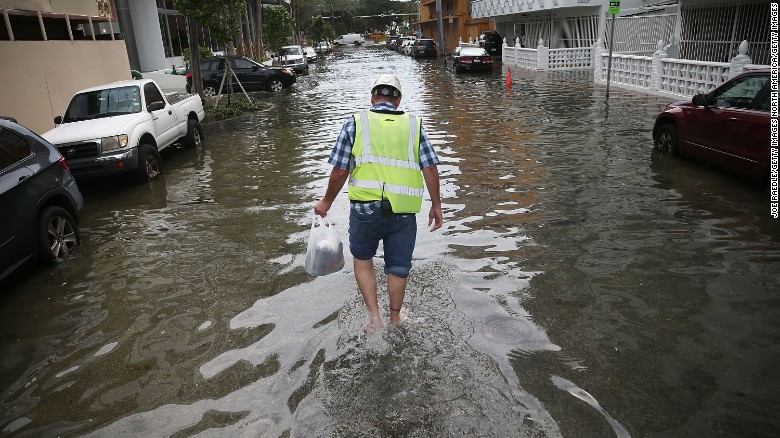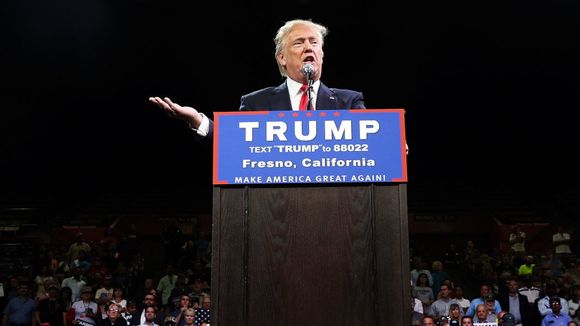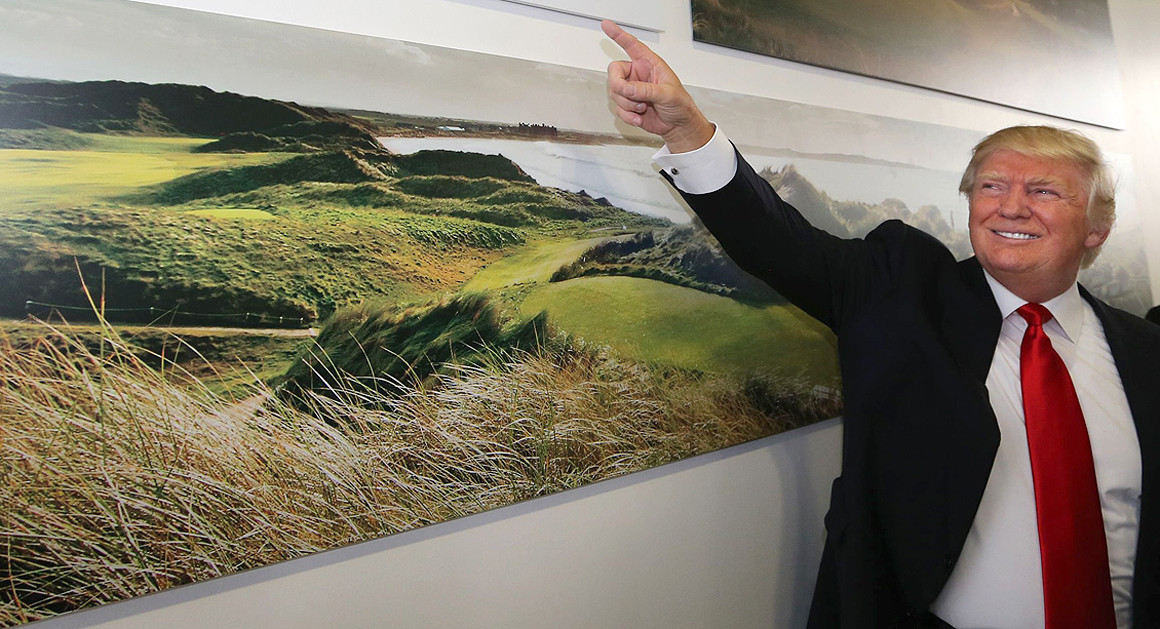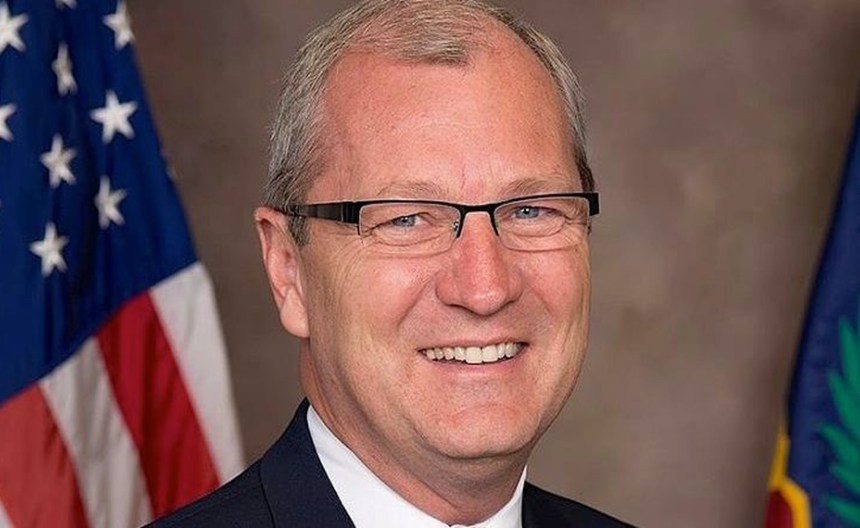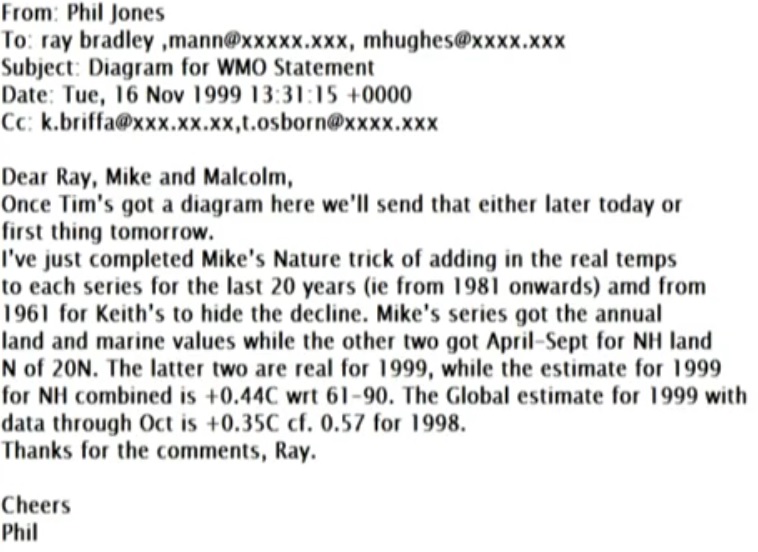Donald Trump says he is “not a big believer in global warming.” He has called it “a total hoax,” “bullshit” and “pseudoscience.”
But he is also trying to build a sea wall designed to protect one of his golf courses from “global warming and its effects.”
The New York billionaire is applying for permission to erect a coastal protection works to prevent erosion at his seaside golf resort, Trump International Golf Links & Hotel Ireland, in County Clare.
A permit application for the wall, filed by Trump International Golf Links Ireland and reviewed by POLITICO, explicitly cites global warming and its consequences — increased erosion due to rising sea levels and extreme weather this century — as a chief justification for building the structure.
The zoning application raises further questions about how the billionaire developer would confront a risk he has publicly minimized but that has been identified as a defining challenge of this era by world leaders, global industry and the American military. His public disavowal of climate science at the same time he moves to secure his own holdings against the effects of climate change also illustrates the conflict between his political rhetoric and the realities of running a business with seaside assets in the 21st century.
“It’s diabolical,” said former South Carolina Republican Rep. Bob Inglis, an advocate of conservative solutions to climate change. “Donald Trump is working to ensure his at-risk properties and his company is trying to figure out how to deal with sea level rise. Meanwhile, he’s saying things to audiences that he must know are not true. … You have a soft place in your heart for people who are honestly ignorant, but people who are deceitful, that’s a different thing.”
Neither Trump’s spokeswoman, Hope Hicks, nor Alan Garten, the general counsel of the Trump Organization, the umbrella company for Trump’s business ventures, responded to requests for comment.
For years, owners of seaside assets, investors, and industries like reinsurance have been busily adapting to and hedging against climate change – a reality widely acknowledged by the world’s top business leaders.
“If you’re being responsible you are protecting your property and investing in these things,” said Cynthia McHale, director of the insurance program at Ceres, a nonprofit that works with businesses and institutional investors to promote sustainability. “It’s certainly best practice.” But McHale added that many commercial developers of seaside properties fail to account for climate change in their decisions because they are focused on short time horizons.
Trump snatched up the golf resort from a distressed buyer in February 2014, after a winter in which an unusual number of severe storms hit the west coast of Ireland. The businessman immediately took an active hand in advancing and promoting his Irish investment.
In April of 2014, Tony Lowes, director of Friends of the Irish Environment, said Trump called him to offer the group help in opposing a proposed offshore wind project in a nearby, environmentally sensitive area. The group, which has since come out against Trump’s proposed wall, declined the businessman’s offer.
The next month, Trump gave an interview about the golf resort, also known as Trump Doonbeg, on Irish radio, vowing to invest up to €45m in the property. “If I didn’t have confidence in Ireland I would never have made this big investment,” he said. He also promised to “reshape it and make it one of the greatest golf courses in the world.”
But Trump has encountered obstacles to that vision. Days before he concluded his purchase, a single storm eroded as much as eight meters of frontage in some parts of the golf course. Since acquiring the property, Trump has been trying to build coastal protection works to prevent further erosion.
Earlier this month, after failing to win special approval from the national government for the structure, Trump re-submitted a planning application with the Clare County Council seeking permission to build the wall, which would consist of 200,000 tons of rock distributed along two miles of beach. As part of the application, Trump International Golf Links submitted an environmental impact statement — prepared by an Irish environmental consultancy — which argues that erosion is likely to accelerate as sea levels rise more quickly.
The statement acknowledges one Irish government study that assumes a steady rate of erosion through 2050, but argues that the study fails to account for the effects of climate change: “If the predictions of an increase in sea level rise as a result of global warming prove correct, however, it is likely that there will be a corresponding increase in coastal erosion rates not just in Doughmore Bay but around much of the coastline of Ireland. In our view, it could reasonably be expected that the rate of sea level rise might become twice of that presently occurring. … As a result, we would expect the rate of dune recession to increase.”
The bigger problem, though, according to the impact statement, will be the erosion caused by larger, more frequent storms. “As with other predictions of global warming and its effects, there is no universal consensus regarding changes in these events,” it states. “Our advice is to assume that the recent average rate of dune recession will not alter greatly in the next few decades, perhaps as far into the future as 2050 as assumed in the [government study] but that subsequently an increase in this rate is more likely than not.”
Later, the statement argues that rising sea levels make taking action unavoidable. “A Do nothing/Do minimum option will have the least impact on [natural] processes but the existing erosion rate will continue and worsen, due to sea level rise, in the next coming years, posing a real and immediate risk to most of the golf course frontage and assets,” states the conclusion of an analysis of various options for responding to the erosion.
Trump’s company has warned not only the county council of the perils of climate change, but also local residents. An appendix to TIGL’s planning application includes a scan of a brochure that the company has distributed to residents to make the case for building the proposed coastal protection works. The heading of one page — emblazoned with a “Trump Doonbeg” logo — is “Need for Coastal Protection.” The page lists four bullet points, the last of which is, “Predicted sea level rise and more frequent storm events will increase the rate of erosion throughout the 21st century.”
The statements in the filings contradict positions publicly held by Trump, who has weighed in repeatedly on climate change in recent years – mostly to dismiss it outright. In 2012, he tweeted, “The concept of global warming was created by and for the Chinese in order to make U.S. manufacturing non-competitive,” though he has since insisted the tweet was a joke. In 2013, he tweeted, “We should be focused on clean and beautiful air-not expensive and business closing GLOBAL WARMING-a total hoax!” In January 2014, he tweeted, “This very expensive GLOBAL WARMING bullshit has got to stop. Our planet is freezing, record low temps, and our GW scientists are stuck in ice.”
In some recent comments, Trump has continued to defy the widely held scientific consensus about man-made climate change, but his statements have become more complicated, if not entirely clear.
“I’m not a believer in global warming. And I’m not a believer in man-made global warming,” Trump told conservative radio host Hugh Hewitt in September. “It could be warming, and it’s going to start to cool at some point. And you know, in the early, in the 1920s, people talked about global cooling.”
That same month, Trump appeared on MSNBC’s “Morning Joe” and said, “I consider climate change to be not one of our big problems. I consider it to be not a big problem at all. I think it’s weather. I think it’s weather changes. It could be some man-made something, but you know, if you look at China, they’re doing nothing about it. Other countries, they’re doing nothing about it. It’s a big planet.”
Asked by a Washington Post editorial writer in March, “Don’t good businessmen hedge against risks, not ignore them?” Trump responded, “I just think we have much bigger risks. I mean I think we have militarily tremendous risks. I think we’re in tremendous peril. I think our biggest form of climate change we should worry about is nuclear weapons.”
The Pentagon, however, describes climate change as “an urgent and growing threat to our national security.”.
Earlier this year, Trump tapped North Dakota Rep. Kevin Cramer, who also does not accept the scientific consensus on climate change but has expressed support for a modest carbon tax, as an energy adviser. Next Thursday, Trump is scheduled to travel to North Dakota to address a gathering sponsored by an oil industry group, an audience that will likely be receptive to climate skepticism.
But Trump — who recently vowed to “at a minimum” renegotiate December’s Paris climate deal — finds his position at odds with the two-thirds of the American public who described themselves as a “great deal” or “fair amount” worried about global warming in a March Gallup poll.
The New York billionaire has not been shy about abandoning past positions on issues like gun control and abortion as his views and his political considerations have evolved. And as he pivots to the general election, his stated position could come into line with the position taken by his business.
“It’s conceivable that he might swing around on this,” Inglis said. “Of course it would be a smart political move for him or for anyone because that’s where the public’s already going. That’s where millennials are going. That’s where the future is.”
[Politico]
